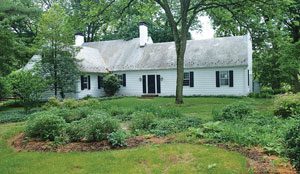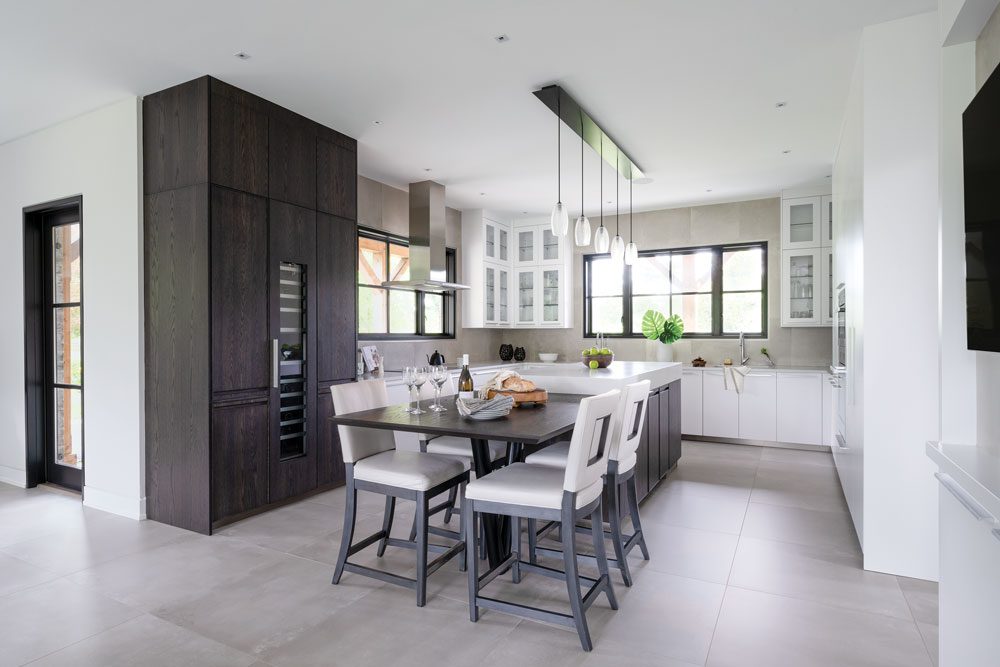A Farmhouse with Modern Flair
Writer Marirose Krall | Architect Paul Grabowski, R.A. | Builder Richard Wonsala | Location Skillman, NJ | Photos and styling Tori SikkemaA Skillman home beautifully merges two distinct aesthetics

The exterior of the home is clad in clay-fired brick. “Not one brick is the same,” builder Richard Wonsala says. “We used a technique called lime washing. That’s why the house looks white. It’s a living finish that changes with the weather according to moisture content and temperature.”
This property in Skillman, New Jersey, has an illustrious history. Known as the Gallup Estate, it once belonged to the family that pioneered the famous polling system. The existing home was built in the early part of the 20th century, and both it and the surrounding acreage needed an upgrade. Richard Wonsala, of RDA Building Contractors in Wall Township, was tasked with reimagining the residence and transforming the land into a workable farm.

Richard Wonsala
RDA Building Contractors Inc. | Wall Township | 732-223-5682 | RDABuildingContractors.com
Design NJ: What was the scope of the project?
Richard Wonsala: There were many facets to this job. It’s a large piece of property and the clients wanted a “gentleman’s farm.” Our role involved getting the entire farm up and running. In addition to constructing the house, we built a barn, installed boundary fencing, graded and sculpted all the pastures within that fencing and engineered a water system.
DNJ: Was the house a new build or a renovation?
RW: Technically, it was not a new build. We kept an original patio at the back of the home, so local guidelines designated this as a renovation. The existing house on the property was built in the 1930s. Unfortunately, it had been remodeled multiple times over the years, resulting in an impractical, chopped-up layout. While the house was not worth saving, the materials comprising it were. We hired a deconstruction company to take the structure apart board by board. They were able to salvage almost all of the materials for use elsewhere. This was an environmentally sound decision, and the homeowners were able to claim it as a charitable donation.
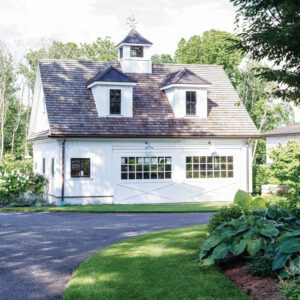
The new garage features two bays and a full bathroom. It’s currently used for storage, but the second floor is heated, making it suitable for habitation should the need or desire arise.

BEFORE | The previous garage contained all the property’s mechanical infrastructure. Wonsala’s team left it until later in the project when those utilities could be relocated.
DNJ: What would you call the style of the new house?
RW: The owner likes to call it a farmhouse; it’s a more sophisticated version of a farm. Part of the job was to make the outside look 100 years old. To do that, we used materials on the exterior — such as real copper — that would have been used a century ago. The clay-fired bricks are from North Carolina, and each one is different. To create the finish on the bricks, we used a technique called lime washing; that’s why the house looks white. It’s a living finish that changes with the weather according to moisture content and temperature. We used it because it gave us the traditional, rustic look that the clients wanted.
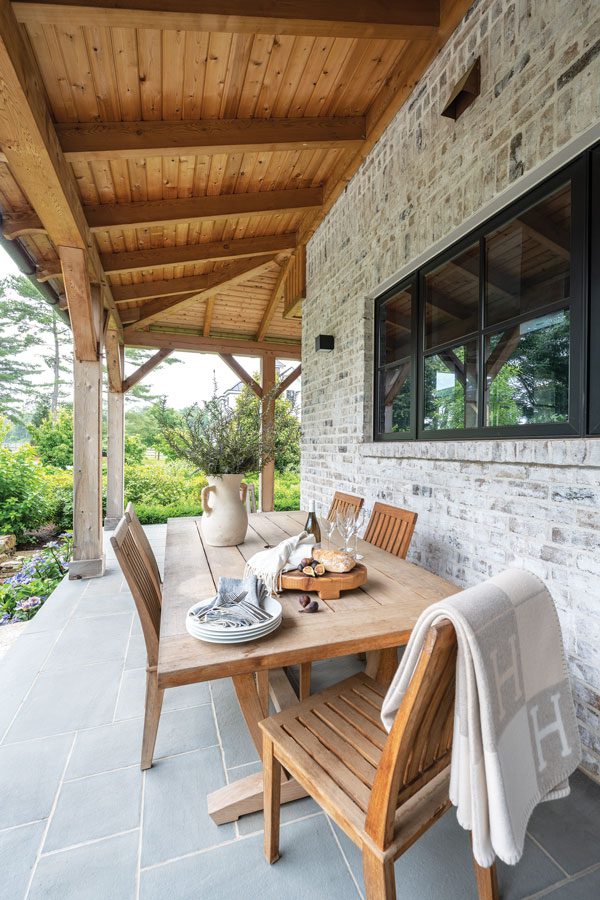
A rustic table on a covered patio is a good place to take a midday break after working all morning on the farm.
DNJ: The interiors are anything but rustic. What was the directive for the design?
RW: The clients wanted an ultramodern aesthetic inside the house. We created the design around the metal staircase; it’s something really special. It’s made from glass and structural steel that we found at a steelyard. We didn’t want it to look manufactured or store-bought. We sanded the steel and painted it matte black on site, then welded it together, keeping the welds visible. The stair tread is made of solid hunks of white oak. There are no newel posts on the rails; the only thing holding up the rails is the glass itself.
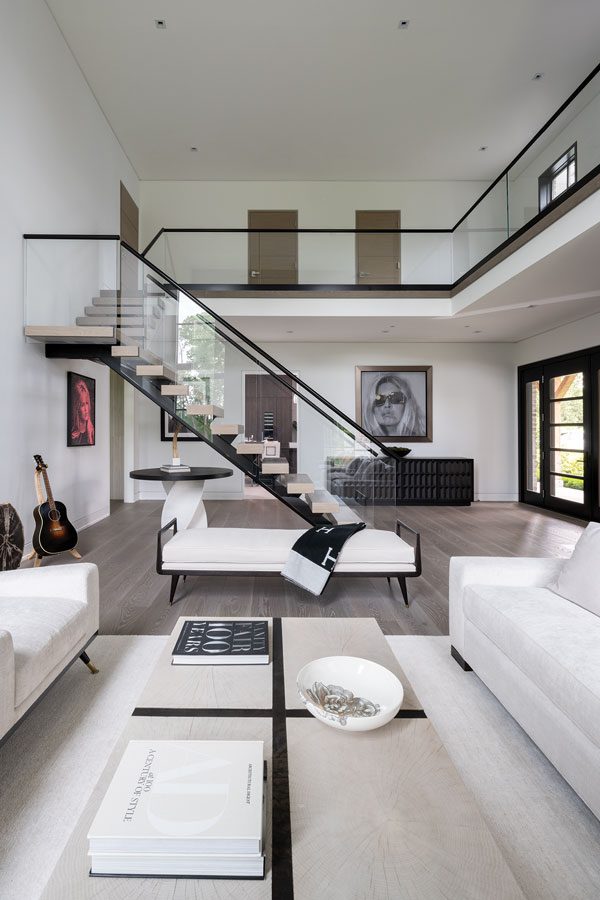
The glass rails on the staircase keep sight lines open from the living room into the adjacent entry and kitchen.
DNJ: Like the stair rail, the interior architecture is straightforward and unfussy. How did you create that look?
RW: The interior of the clients’ former house was very traditional. In this house, however, they were looking for something not as formal so we kept the interior structure clean. It’s absent of molding, but that doesn’t mean it’s absent of detail. Rather than standard trim, we put in aluminum “reglets.” Reglets allow for a half-inch-by-half-inch recess along the door jamb. That recess creates a shadow that defines the doorway. It’s spackled into the drywall so it’s seamless. The entire house is trimmed that way. We did use standard base molding, but that was strictly because it was necessary for mechanical reasons, i.e., to hold down the floor.
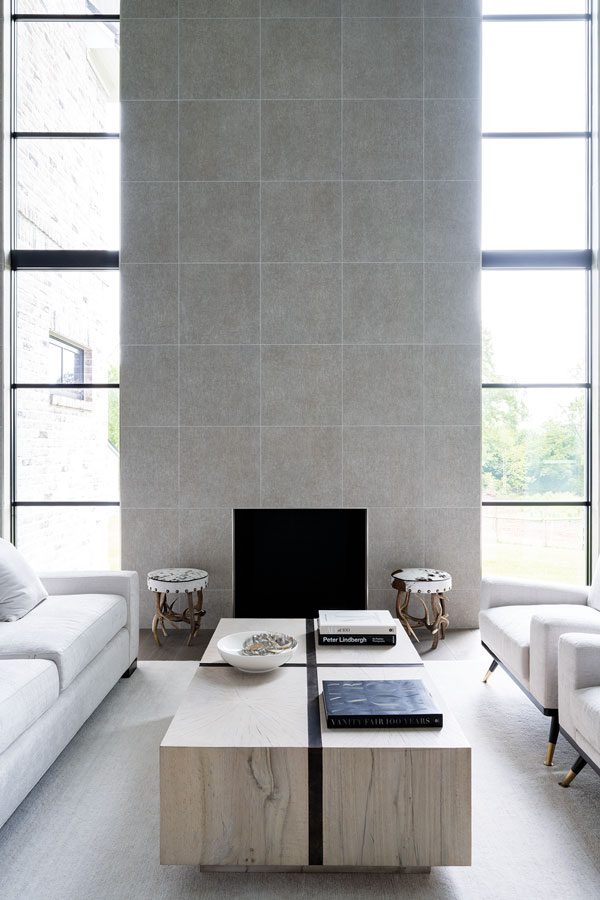
The floor-to-ceiling concrete fireplace surround in the living room is reinforced with steel so the wall can withstand weather, door slams and other vibrations.
DNJ: The fireplaces are also clean and linear yet are still dramatic additions to the décor. How did you achieve the distinctive looks?
RW: The wood-burning living room fireplace is just a black brick box surrounded by concrete and flanked by floor-to-ceiling windows. We were worried about the torsion of the wind blowing against it, or even just the vibration from a slammed door, so we ribbed the concrete with steel and edged the windows in steel. The fireplaces in the dining room and primary bedroom are of European design and wouldn’t have met United States fire codes. To bring them up to U.S. code, we had to make the walls surrounding them out of non-combustible masonry boards and vent the boxes. Above each, there’s a thin line visible; that’s where the heat escapes.
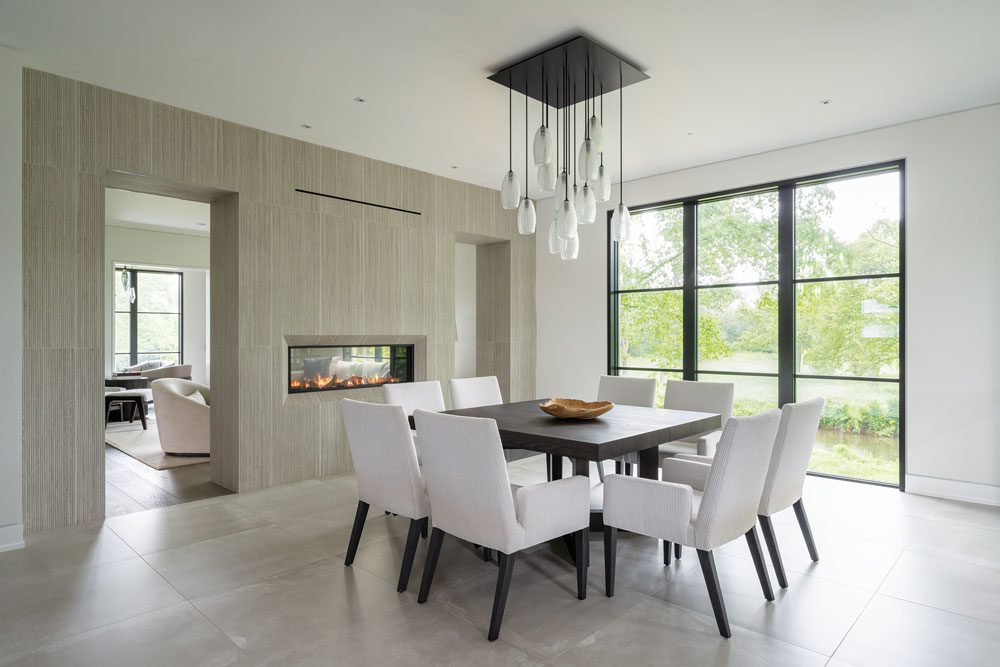
The dining room is furnished with a square table and angular chairs, reinforcing the linear forms of the architecture.
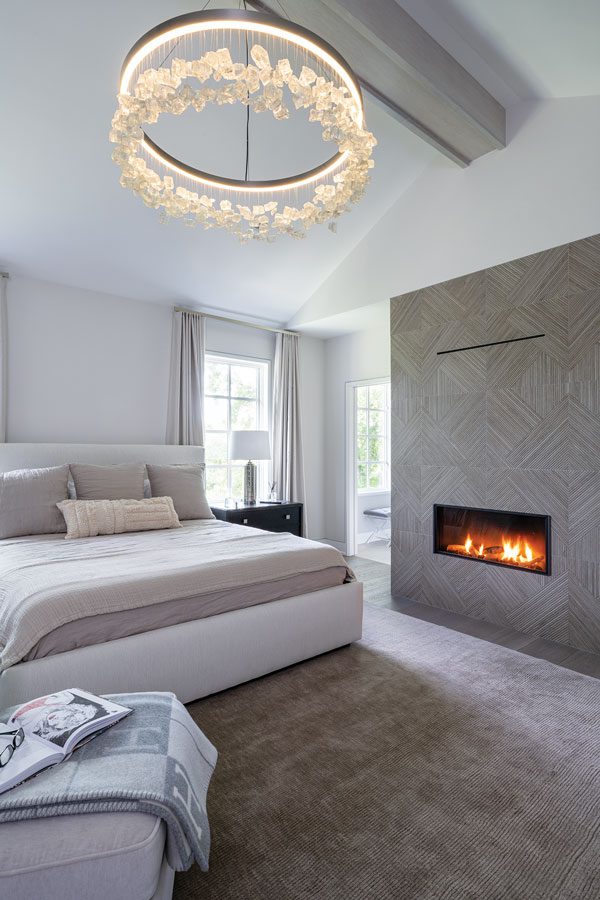
The primary bedroom has a contemporary feel with simple lines and an understated palette. The beamed ceiling is a nod to the farmhouse style on the home’s exterior.
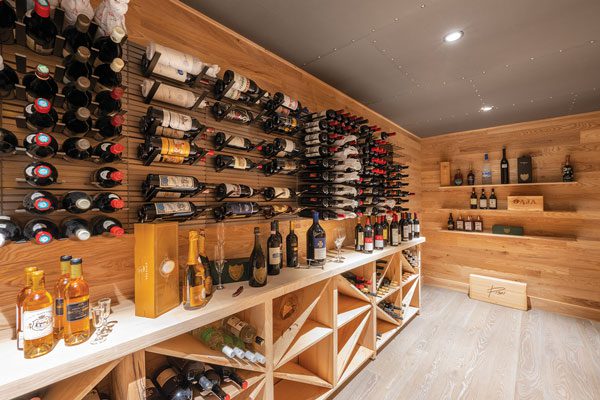
RDA Building Contractors Inc. crafted the wine cellar from an ash tree on the property that was suffering from blight and presented a danger to the house. Wonsala extols the value of raw lumber in construction. “Everything in the wine cellar came from a tree that was approximately 5 feet in diameter,” he says. “The growth rings are so tight and the grain is so beautiful. You can’t buy wood like that today.”
DNJ: You mentioned that you were tasked with making this property a working farm. What were the challenges involved with that?
RW: It was interesting and completely different from working on a standard lot. This project encompassed everything from determining how to get construction vehicles onto the property while retaining the original trees to how the barn and the pasture would be positioned. We needed to work around a stream, and we had to install geothermal wells in locations where they wouldn’t be in the way of the pastures. (The farm includes livestock.) The project was a complex undertaking, but it was really cool because of its vastness and multifaceted aspects.

